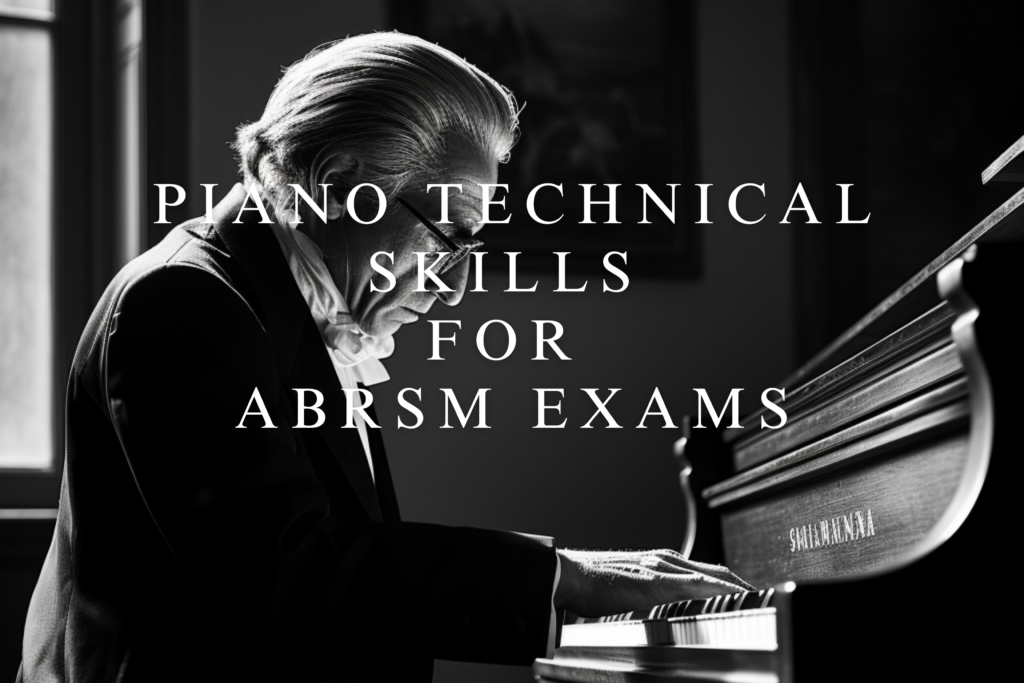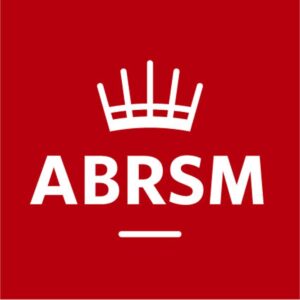Piano Lessons, Scaramuzza Technique
Mastering the Keys: Attaining Distinction in ABRSM Piano Performance Grades with Scaramuzza’s Technique.
Piano Technical Skills for ABRSM Exams
Introduction
The ABRSM (Associated Board of the Royal Schools of Music) piano grades serve as a global benchmark for evaluating pianists’ skills and musicianship. Reaching for distinction within these grades requires dedication, practice, and a keen eye for detail. In this article, we will explore effective strategies and techniques, with a focus on incorporating Scaramuzza’s technique, to help you achieve the highly sought-after distinction in ABRSM piano performance grades.
Selecting Appropriate Repertoire
Choosing suitable repertoire is crucial to a successful performance. Opt for pieces that not only highlight your technical abilities but also allow you to showcase your musicality. Strive for a diverse selection of contrasting styles, periods, and tempos to demonstrate your versatility and artistry as a pianist.
Developing a Solid Technical Foundation with Scaramuzza’s Technique
Scaramuzza’s Technique, developed by the renowned Argentine pianist Vincenzo Scaramuzza, emphasizes fluidity, relaxation, and efficiency in piano playing. Incorporating this technique into your practice routine can greatly enhance your technical proficiency. Focus on exercises that promote relaxation of the hands, wrists, and arms, ensuring a natural and effortless movement across the keyboard. Scaramuzza’s technique emphasizes using the weight of the arm to produce sound, resulting in a rich and resonant tone.
Attaining a Deep Musical Understanding
Beyond technical prowess, the ability to convey musical expression is paramount. Dedicate time to studying the background, historical context, and characteristics of each piece you perform. Delve into the composer’s intentions, stylistic nuances, and interpretive possibilities. Experiment with various phrasing, dynamics, and articulation to bring out the essence of the music.
Artistic Interpretation
Strive to develop a unique and personal interpretation of the music you play while staying true to the composer’s intentions. Use Scaramuzza’s Technique to unlock the expressive possibilities of the piano. Experiment with variations in tempo, rubato, and subtle expressive elements to add depth and emotion to your performance. Seek feedback from mentors, teachers, and fellow musicians to further refine your interpretation.
Attention to Detail
Distinguished performers pay meticulous attention to detail. Focus on accuracy, timing, and rhythm, striving for precision in fingerings, pedaling, and voicing. Record your practice sessions and performances to identify areas for improvement and fine-tune your playing. Scaramuzza’s Technique emphasizes careful and deliberate control of each finger, enabling precise execution of even the most intricate passages.
Memorization and Stage Presence
Memorizing your pieces enhances your connection with the music and allows for a more engaging performance. Incorporate Scaramuzza’s Technique by visualizing the movements and shapes of the music in your mind. Practice playing from memory early on in your preparation process, gradually building confidence and accuracy. Additionally, work on stage presence, projecting confidence, and establishing a rapport with the audience. Effective stage presence enhances the overall impact of your performance.
Mock Performances and Feedback
Simulate performance conditions by organizing mock performances for friends, family, or teachers. These practice performances help you acclimate to the pressure of real examinations or recitals. Seek constructive feedback and critique from experienced musicians to identify areas for improvement and further refine your performance.
Time Management and Consistent Practice
Allocate sufficient time for practice and maintain a consistent routine. Create a structured practice schedule that encompasses various aspects of your repertoire, technical exercises, sight-reading, and Scaramuzza’s Technique. Regular and dedicated practice, even in shorter sessions, is more effective than sporadic, lengthy sessions.
Effective Sight-Reading
Sight-reading is an essential skill at higher grades. Incorporate Scaramuzza’s Technique by adopting a relaxed and attentive approach. Practice regularly by reading new pieces, focusing on accuracy, rhythm, and musicality. Gradually increase the difficulty of sight-reading exercises to expand your abilities. Develop a systematic approach to quickly assess key signatures, rhythms, and phrasing.
Seek Professional Guidance
Working with a qualified piano teacher or mentor who is familiar with ABRSM examinations and Scaramuzza’s Technique can provide invaluable guidance. They can help you identify areas for improvement, suggest appropriate repertoire, and offer targeted exercises to address specific technical challenges while incorporating Scaramuzza’s Technique.
Conclusion on Piano Technical Skills for ABRSM Exams
In conclusion, by incorporating Scaramuzza’s Technique into your practice routine, along with the strategies mentioned above, you can enhance your technical abilities, musicality, and overall performance, increasing your chances of achieving the distinction in ABRSM piano performance grades. Embrace the journey, practice diligently, and let your passion for music shine through your playing.
Book your trial piano lesson with us now, and start developing your piano technique!


